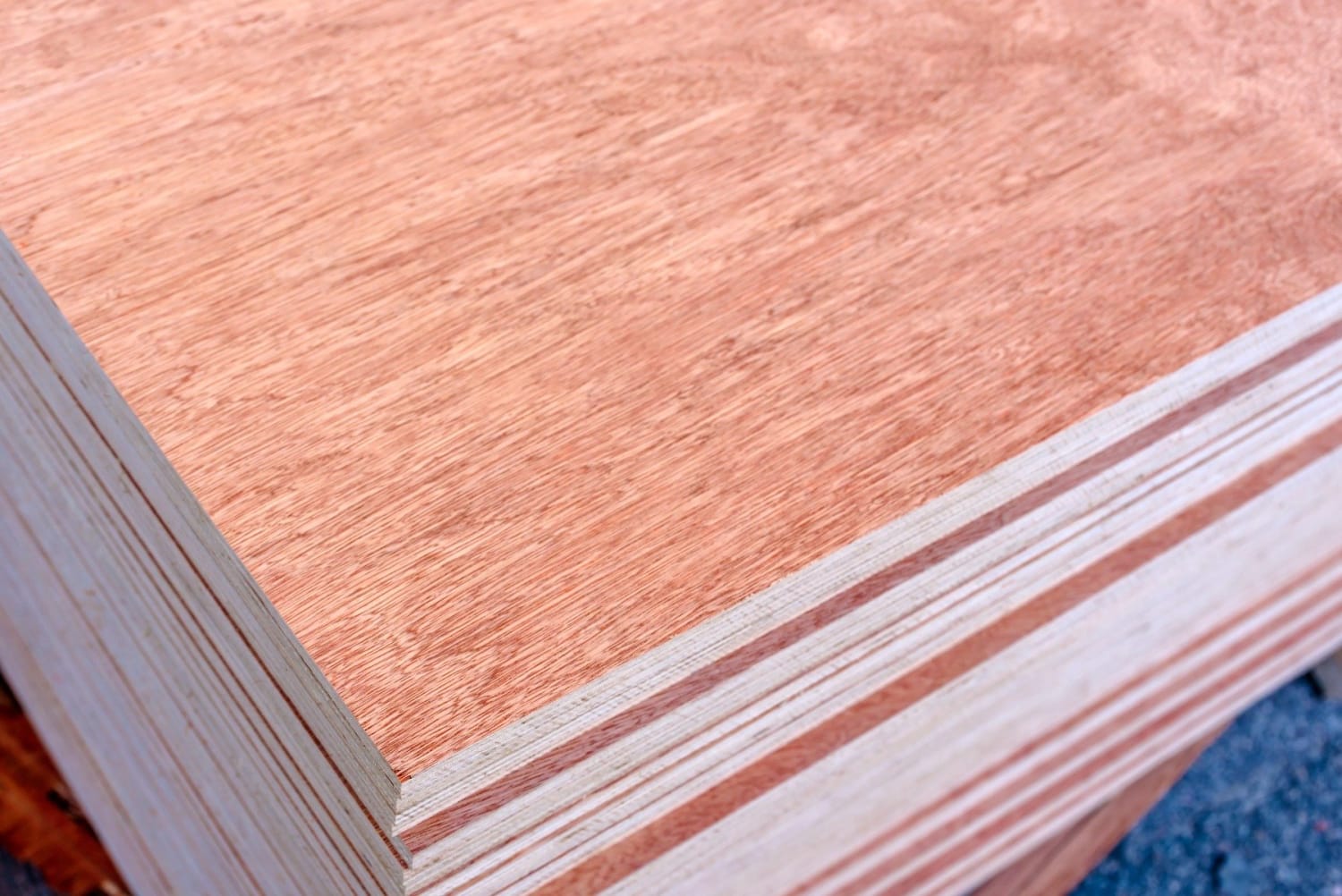At first glance, marine plywood or marine ply is something you would expect to see at the marina on the boats docked there. And that is the original idea behind this type of plywood, but it is used in many more settings now. Let’s get to know marine ply and what it can do.
What is marine plywood made from?
Marine plywood can only be made from specific varieties or species of timber such as Gaboon timber mainly harvested from Equatorial regions. The key is that the wood used is lightweight, durable and retains some flexibility but most importantly free from what is known as core gaps.
Plywood is made up from veneers that are peeled from the felled log, these veneers are cross laid and bonded together to make up the panel and give it the strength that plywood is well known for.
The veneers peeled and laid for Marine Plywood are free from splits and other defects in them - this is because a split or defect will create a void or gap in the core of the finished plywood. In marine plywood any core gap would be susceptible to filling with moisture or water when exposed and could cause the veneers to separate or delaminate - effectively causing the plywood to fail. The glue used for bonding the veneers is a high quality phenolic resin which is durable when used in an exposed exterior setting.
The result is Marine Plywood is guaranteed to be free from core gaps, this is apparent when seen from the edge, it's high quality really stands out!
Despite its excellent construction and high quality marine plywood remains a natural timber product, it is therefore still susceptible to moisture ingress and must be treated on all sides and edges to protect it from the elements.
British Standard marine ply
As with all materials, we have a British Standard that applies to marine ply to ensure it meets certain standards. This is known as Marine Plywood BS1088 and stipulates a few important things about the wood.
A few examples of the BS requirements include:
- That the adhesive is proven to be highly weather-resistant as well as resistant to micro-organisms such as fungi
- That the face veneers are free from defects – knots are the most common examples although ‘sound pin’ knots are okay as long as there aren’t too many of them in a set area
- That the wood has a moisture content of 6-14% when it leaves the factory
As someone buying marine ply, you don’t need to worry too much about these and the other conditions that come as part of the BS1088. The important thing for you is to check that the product you are buying complies with this. Any reputable seller will be able to confirm this so you can be confident in the quality of the wood you are buying.
Where can you use marine plywood?
You may think that if you aren’t into boat building or renovation, you may never encounter marine plywood. But there are loads of ways to use it around the home and garden due to its moisture tolerance and high quality.
For example, when installing a new bathroom, marine ply is often used in structural elements. Because it won’t easily delaminate if wetted and generally remains fairly stable in moist environments when properly treated, this makes it perfect for a bathroom or shower room. You might not see it, but it will be there, working in the background.
Another use for it can be as subflooring under floorboards or something like laminate. It can help strengthen the floor, create a space for underfloor heating and withstand any moisture such as spilt water or condensation.
Top-quality plywood
Marine ply is top quality plywood that is more expensive than normal types of ply but for good reason. It has strength but can easily be cut and is far more durable in moist environments. This makes it ideal for many jobs – including boat building!
Browse through our range of Marine Plywoods for the best quality at competitive prices!




